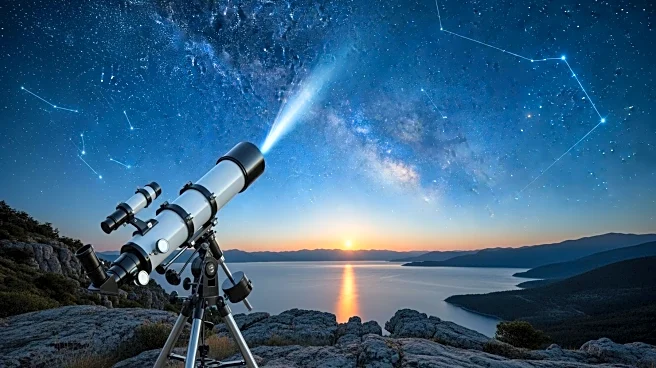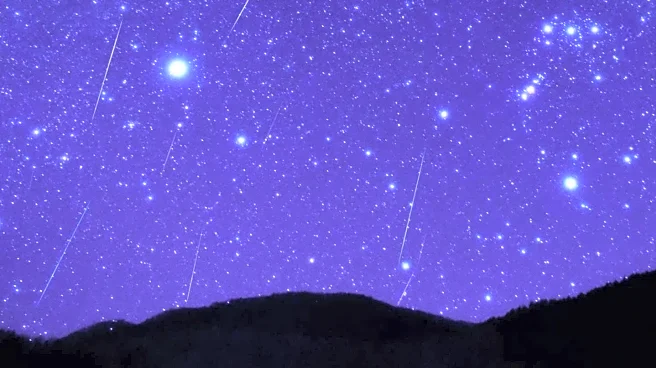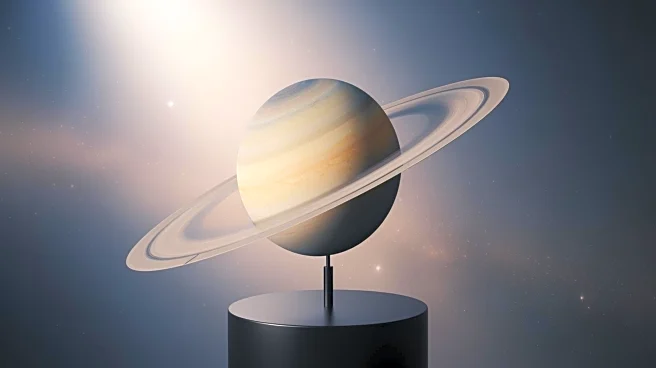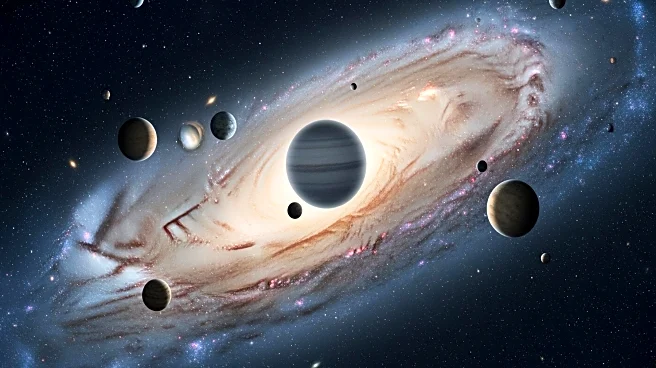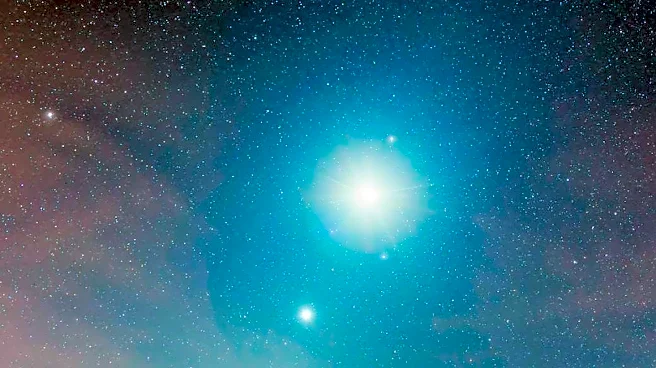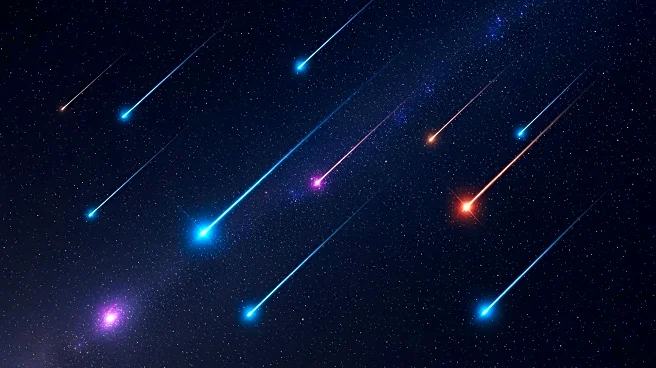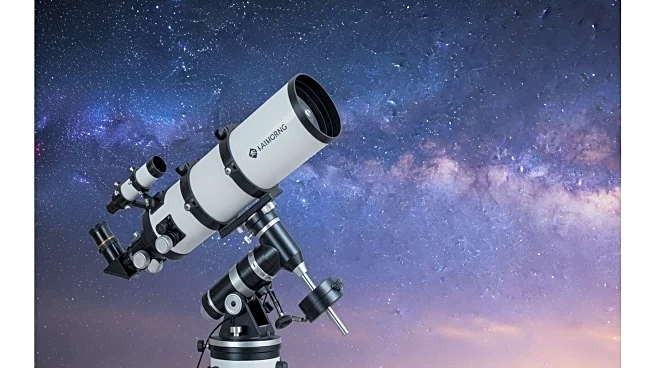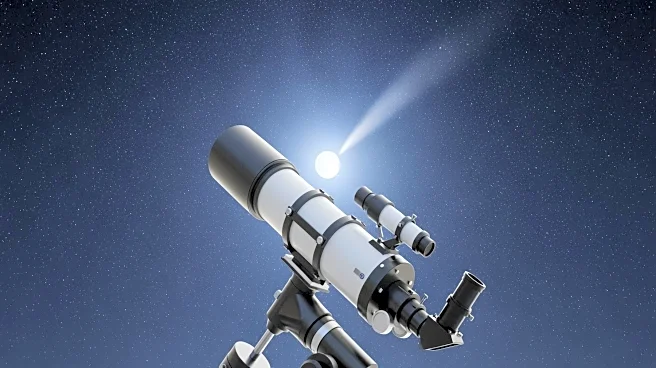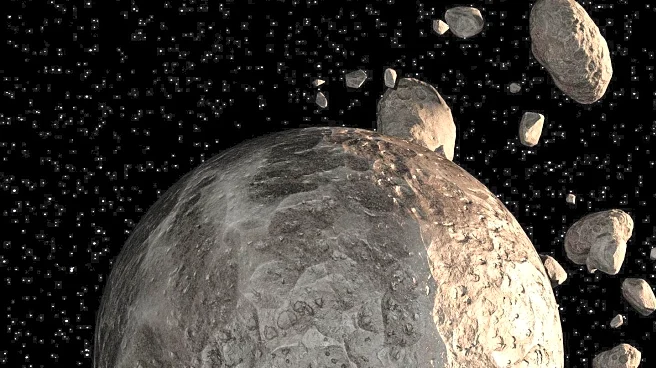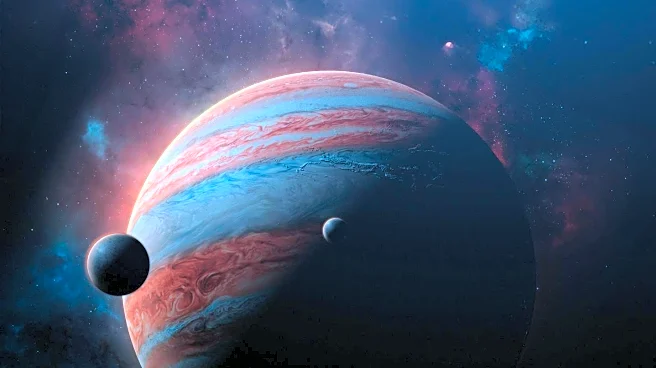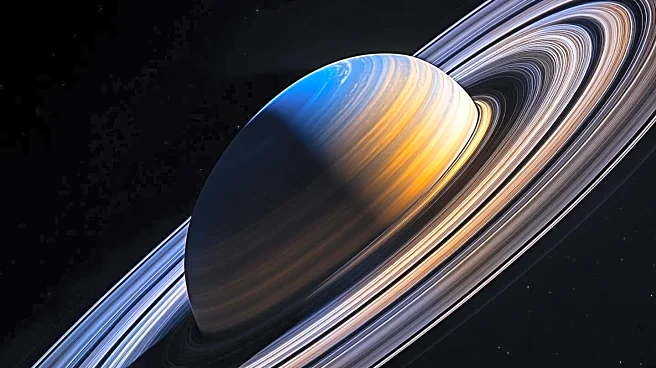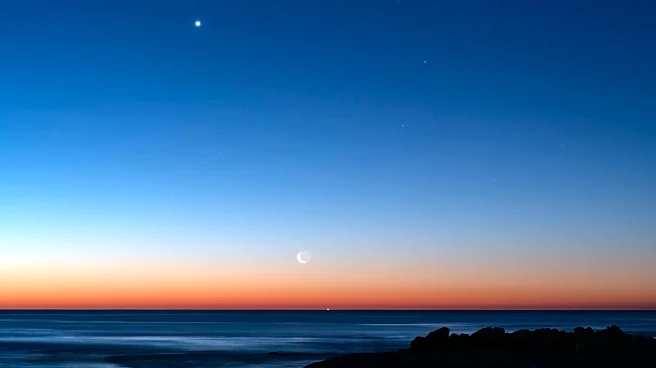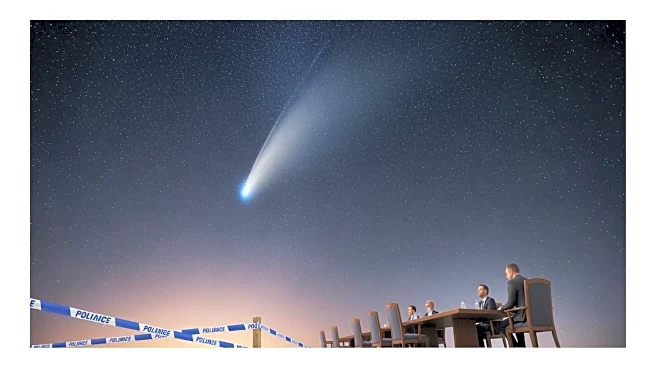What's Happening?
Skywatchers are treated to a series of rare celestial events as autumn 2025 reaches its midpoint. On October 25, 2025, the moon appeared as a waxing crescent, illuminated at 26%, while Saturn's moon Iapetus reached its inferior conjunction, positioned
just north of Saturn. Saturn itself was the brightest point in the southern sky, with its rings visible to those with telescopes. As November approaches, the lunar show intensifies, culminating in a nearly full moon on November 6, 2025. This night also features a rare lunar occultation of the Pleiades star cluster, visible from Alaska to western Europe. Jupiter, Saturn, and Venus also offer astronomical delights, with their positions shifting in the night sky, inviting both seasoned stargazers and casual observers to marvel at the celestial spectacle.
Why It's Important?
These celestial events provide a unique opportunity for astronomers and enthusiasts to observe and study the night sky. The visibility of Saturn's rings and moons, along with the lunar occultation of the Pleiades, offers valuable insights into planetary movements and alignments. Such events can inspire interest in astronomy and science, encouraging educational activities and public engagement. The dynamic nature of the night sky serves as a reminder of the universe's ancient rhythms, fostering a sense of wonder and curiosity about the cosmos.
What's Next?
As the lunar cycle progresses, skywatchers can anticipate further celestial events, including the full moon on November 5, 2025. The positions of Jupiter, Saturn, and Venus will continue to shift, offering new viewing opportunities. Mercury and Mars, currently lost in twilight, will reappear in the morning sky, providing additional targets for observation. These ongoing changes in the night sky will continue to captivate and engage those interested in astronomy.
Beyond the Headlines
The rare celestial events highlight the importance of preserving dark skies for astronomical observation. Light pollution can hinder the ability to view such phenomena, emphasizing the need for initiatives to reduce artificial lighting in urban areas. Additionally, these events underscore the interconnectedness of celestial bodies, offering insights into the gravitational forces and orbital dynamics that govern the solar system.
